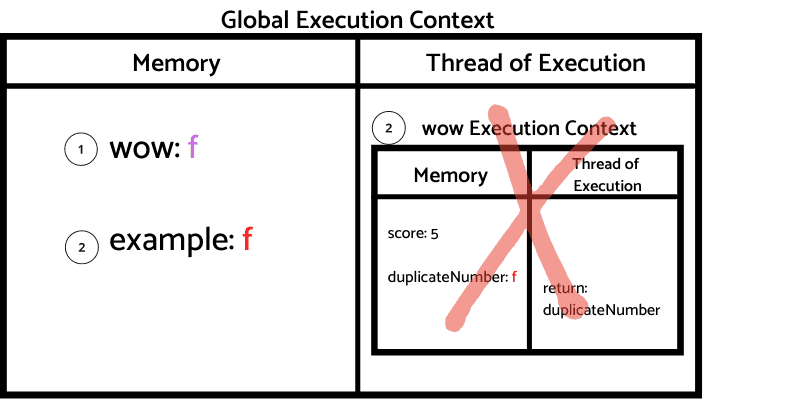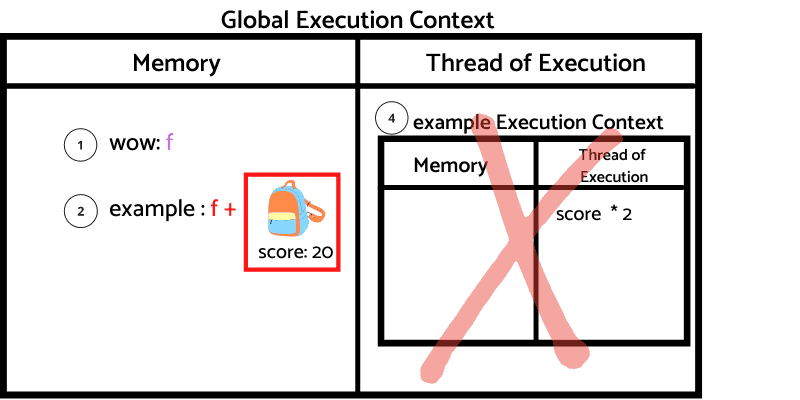Introduction
Continuing to improve my understanding of JS, I want to take a look at how closure works.
I think many junior/mid-level developers don't understand fully the concept of closure.
I want to create a reference on this post, so whenever you want to refresh what was closure about, you can check it!
This is part of my How JS works series, to understand this post, I recommend you first read Part 1 if you haven't done it.
What is closure?
From MDN:
A closure is the combination of a function bundled together (enclosed) with references to its surrounding state (the lexical environment). In other words, a closure gives you access to an outer function’s scope from an inner function. In JavaScript, closures are created every time a function is created, at function creation time.
Probably you are thinking the same I did when I read that.
I don't have any idea what are they talking about...
We are going to create a simple example!
How JS works, closure!
This is the code that we are going to analyze.
1: function wow(){
2: let score = 5;
3: function duplicateNumber (){score * 2;}
4: return duplicateNumber;
5: }
6:
7: const example = wow();
8:
9: example();
10: example();
These diagrams are going to guide us step by step on what going on under the hood when JS is executing the code.
Remember, JS executes the code line by line, and that's what we are going to do!
Step 1: Starting with the line 1, Identifier 'wow' is store in memory with the function f.
Step 2: At line 7, identifier example is not yet initialize until wow() is resolve. Since we see a (), it means that we are invoking a function.
This function wow() goes on top of the call stack and it creates a brand new execution context.
In wow's execution context, we first create an identifier score with the value 5 and an identifier duplicateNumber with the function f as value.
JS then jumps to the thread of execution and returns duplicateNumber. On the local memory of wow's execution context, JS find duplicateNumber, identifier example gets created with the function f as value.
The execution context for wow() gets deleted and JS pop out wow() from the call stack.
Step 3: At line 9, JS executes example(), since we know this is an invocation, we push it to the call stack and we create a brand new execution context. We know that invoking example is the same as invoking what used to be duplicateNumber.
The key to understanding closure is coming, hang on tight.
JS wants to execute score * 2, JS looks for value score, but as you can see, we don't have the score value anywhere on memory...
Or do we?
Let's got back to the MDN definition of closure:
A closure is the combination of a function bundled together (enclosed) with references to its surrounding state (the lexical environment). In other words, a closure gives you access to an outer function’s scope from an inner function. In JavaScript, closures are created every time a function is created, at function creation time.
Ok, so what this means?
The function duplicateNumber has access to variables that are defined in its calling context/lexical environment as the closure definition mentioned.
Remember, when JS calls example, JS is calling what used to be duplicateNumber, if you go back to Step 2, you can see that on the lexical environment of duplicateNumber, exist on memory score: 5, and this is what we call the BACKPACK.
On the example identifier, not only the function f was saved, but also the attached BACKPACK!
🤯🤯🤯🤯🤯
JS looks for the score value on the BACKPACK and multiply it by 2, the value score is updated on the BACKPACK to 10, the example execution context gets deleted and example() is push out from the stack.
Step 4: At line 10, JS executes example() again, we push it to the call stack and we create a brand new execution context.
JS does the same as step 3, but when looking for score on the BACKPACK, the value is 10.
The score value 10 gets multiplied by 2.
The example execution context gets deleted and example() is pushed out from the call stack while the score value is updated to 20.
Wow.
Conclusion
I hope this explanation gives you an idea of how JS closure works under the hood and resolves some of the mysteries associated with it.
This is Part 2 of the How JS works, I recommend you to check Part 1 too!








